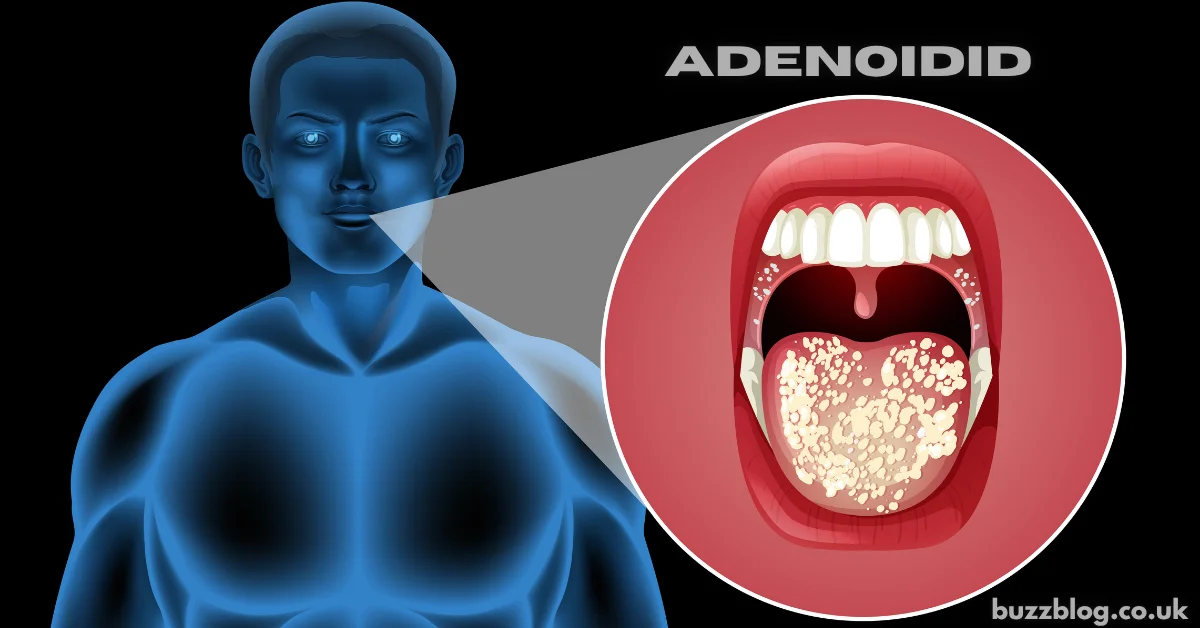Introduction to Adenoiditis in Children
When your child constantly breathes through their mouth, snores loudly, or always seems to have a stuffy nose, adenoidid could be the culprit. It might sound like a mouthful, but this condition is surprisingly common in young children. Let’s explore what it is, why it happens, and how you can effectively treat it.
What Are Adenoids?
Adenoids are small lumps of tissue located at the back of the nose, just above the throat. You can’t see them through the mouth like you can the tonsils, but they play a big role in protecting the body against infections, especially during early childhood.
Why Are Adenoids Important in Children?
Adenoids are part of the immune system. They trap bacteria and viruses entering through the nose and mouth and help produce antibodies. However, as children grow older, their immune systems mature, and the adenoids usually shrink or disappear by the teenage years.
What Is Adenoiditis?
Adenoiditis is the inflammation of the adenoidid, typically due to an infection. When they become swollen, they can block airways, cause ear infections, or even affect hearing and speech. This condition can be acute (short-term) or chronic (long-lasting), and both forms require careful management.
Causes of Adenoiditis
Bacterial Infections
One of the primary causes of adenoidid is a bacterial infection, often from Streptococcus, Haemophilus influenzae, or Moraxella catarrhalis. These bugs thrive in environments like daycare centers and schools.
Viral Infections
Common cold viruses like adenoidid, rhinovirus, or even influenza can trigger adenoiditis. Viral infections are more frequent than bacterial ones but usually resolve with supportive care.
Allergies and Environmental Irritants
Dust, pollution, cigarette smoke, and allergens can inflame the adenoids without a true infection. Children with allergies are more prone to recurring episodes.
Risk Factors That Increase Susceptibility
- Frequent upper respiratory infections
- Allergies or asthma
- Exposure to smoke or pollutants
- Attending daycare or school settings
Symptoms of Adenoiditis in Children
Common Signs to Watch Out For
Nasal Congestion and Mouth Breathing
When adenoids swell, nasal passages can become blocked, forcing kids to breathe through their mouths—especially noticeable at night.
Snoring and Sleep Disturbances
Enlarged adenoids are a common cause of snoring in children and may lead to sleep apnea—pauses in breathing during sleep.
Ear Problems and Hearing Issues
Swollen adenoids can block the Eustachian tubes, causing fluid buildup and recurring ear infections or temporary hearing loss.
Chronic vs Acute Adenoiditis
- Acute adenoiditis comes on suddenly and often clears within a week or two with treatment.
- Chronic adenoiditis lasts longer or recurs frequently, sometimes requiring surgical removal of the adenoids.
Diagnosis and Evaluation
Physical Examination
Your pediatrician may check for swollen lymph nodes, observe your child’s breathing, and ask about recurring symptoms.
Endoscopic Evaluation
A thin, flexible scope with a camera may be inserted through the nose to visualize the size and condition of the adenoids.
Imaging Tests (X-Ray or CT Scan)
If necessary, imaging may help rule out other conditions and show the extent of adenoid enlargement.
Treatment Options for Adenoiditis
Home Remedies and Comfort Measures
- Use a cool mist humidifier
- Encourage fluid intake
- Apply warm compresses for ear pain
- Elevate the head during sleep
Medical Treatment
Antibiotics
If a bacterial infection is confirmed, a round of antibiotics is typically prescribed. It’s crucial to complete the entire course even if symptoms improve.
Nasal Sprays and Steroids
Steroid nasal sprays may help shrink swollen adenoids and relieve symptoms—especially in allergic children.
Surgical Intervention (Adenoidectomy)
When Surgery is Needed
- Chronic or recurrent infections
- Sleep apnea or breathing problems
- Hearing issues due to ear infections
What to Expect During Recovery
Recovery from an adenoidectomy is usually quick. Children may experience sore throat, mild fever, or nasal congestion for a few days. Most are back to normal within a week.
Preventive Measures
Good Hygiene Practices
Teaching your child to wash hands regularly can reduce the spread of germs that cause infections.
Boosting Immunity in Children
A healthy diet, regular sleep, and outdoor play can strengthen your child’s immune defenses.
Managing Allergies Effectively
If allergies are a trigger, consider allergy testing and consistent use of antihistamines or prescribed nasal sprays.
Long-Term Outlook and Complications
Possible Complications of Untreated Adenoiditis
- Chronic ear infections
- Speech development delays
- Sleep disturbances
- Impaired academic performance due to hearing loss
Impact on Development and Quality of Life
When treated early, most children recover completely. Timely intervention can prevent long-term health issues and support normal growth and learning.
Conclusion
Adenoiditis in children is more common than many parents realize, but the good news is that it’s highly treatable. By understanding the signs, causes, and treatment options, you can take steps to help your child breathe easier, sleep better, and thrive in every area of life. Whether through simple home care, medications, or surgery, the key is recognizing the problem early and acting swiftly.

